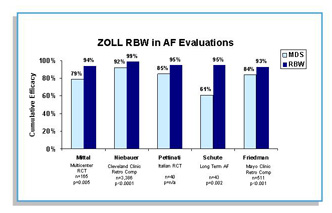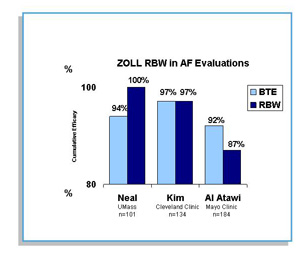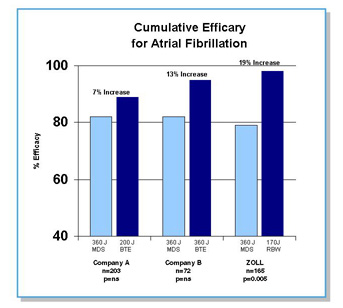Biphasic Technology - Cardioversion
Superior for Cardioversion of Atrial Fibrillation
The ZOLL Rectilinear Biphasic™ Waveform (RBW) has been studied in more human patients than any other biphasic waveform. More than 5,800 patients have been studied for atrial fibrillation in 5 separate studies (Figure 1) comparing the ZOLL RBW to the common standard, monophasic damped sine waveforms (MDS), and in 3 studies comparing the ZOLL RBW to Physio Control Biphasic Truncated Exponential waveform (Figure 2).
The results are consistently impressive: the ZOLL RBW demonstrates statistical superiority to the monophasic damped sine waveform at every energy setting, in every study.* In fact, the ZOLL RBW was the only biphasic waveform to demonstrate a statistically significant improvement over MDS while using lower energy levels (Figure 3).
In comparisons to the Physio-Control waveform, results were statistically equivalent in all three studies - even when the Physio waveform had the advantage of using their pads with the ZOLL device (Kim study) and delivered 2 additional shocks (al Atawi study).
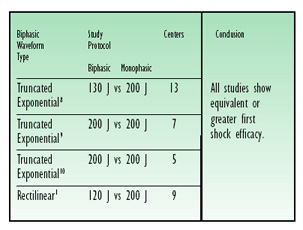 |
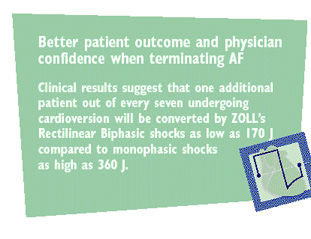 |
Read on to uncover the unique advantages of ZOLL's Rectilinear Biphasic waveform:
Principles of Electricity
More Current at 200 J than other biphasic waveforms at 360 J
Optimal Duration for Defibrillation Shocks
Superior for Cardioversion of Atrial Fibrillation
Superior for Defibrillation of Ventricular Fibrillation
Superior for Defibrillation of Out-of-Hospital Cardiac Arrest
Pediatric Biphasic Recommendations
Bibliography
*The data demonstrates the equivalent efficacy of low energy rectilinear biphasic shocks compared to standard high energy monophasic shocks for transthoracic defibrillation for all patients in VT/VF at the 95% confidence level. The data also demonstrate the superior efficacy of low energy rectilinear biphasic shocks compared to standard high energy monophasic shocks in patients in VT/VF with high transthoracic impedance at the 90% confidence level.

